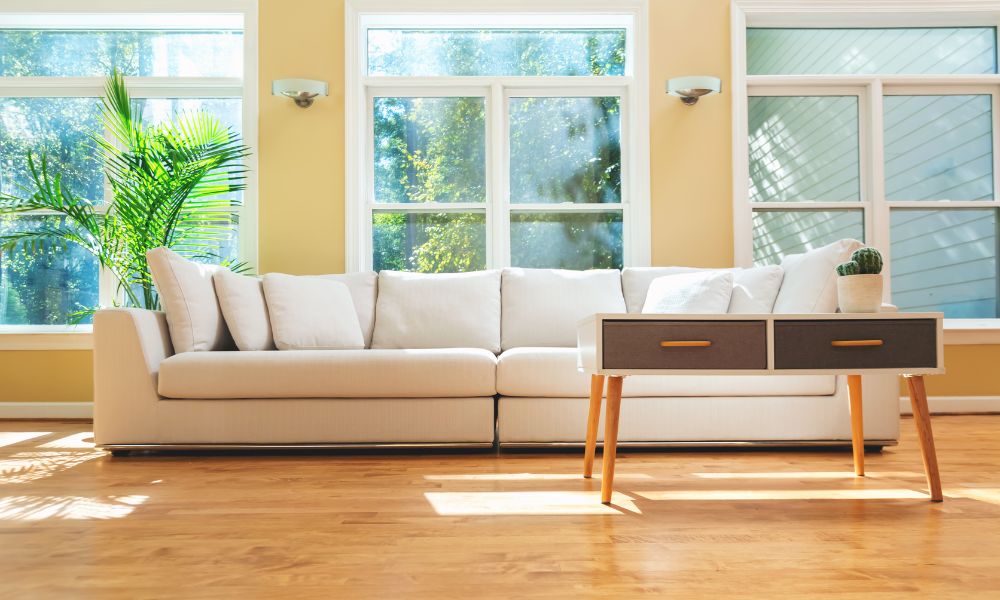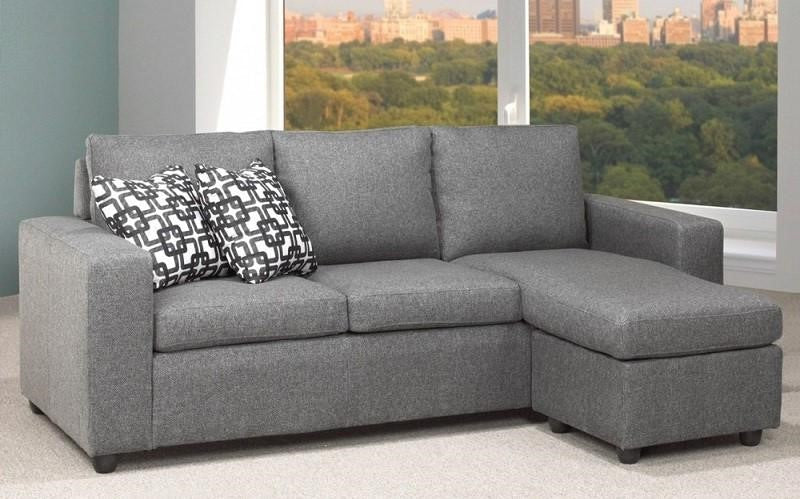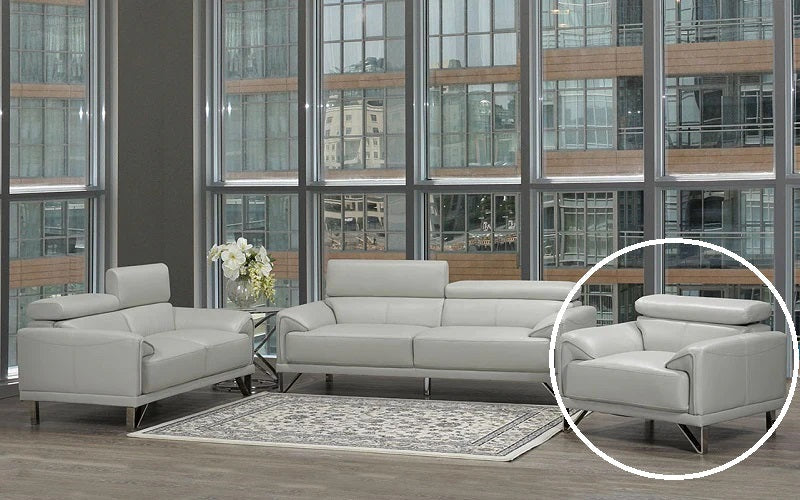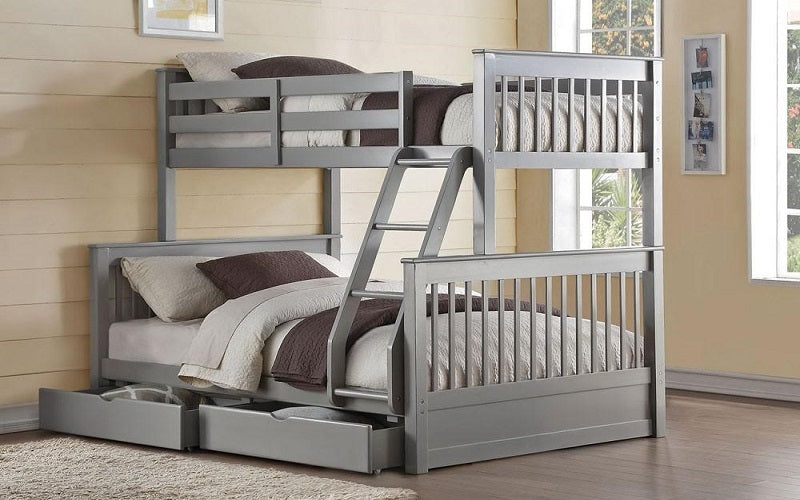Fabric or Leather Sectional Sofa: Deciding Comfort for Your Living Room

When choosing the perfect sectional sofa for your living room, the decision often boils down to one fundamental choice: fabric or leather. Both materials offer unique benefits and distinct aesthetics; choosing between them balances comfort, style, durability, and practicality. Whether you're seeking a cozy, inviting atmosphere or a sleek, sophisticated look, understanding the pros and cons of fabric and leather sectional sofas can help you make the best decision for your home. In this blog post, we'll explore the key factors to consider when deciding between a fabric or leather sectional sofa so that you can find the perfect fit for your living room.
Comfort: The Feel of the Sofa
Comfort is a top priority when selecting a sectional sofa, as it will be used for relaxation, lounging, and possibly even napping. The feel of the material plays a significant role in the overall comfort of the sofa.
- Fabric Sectional Sofas: Fabric sofas are generally considered more comfortable than leather sofas due to their soft texture and warmth. Fabrics like cotton, linen, and microfiber provide a cozy and inviting feel, making them ideal for creating a relaxed and homely atmosphere. The fabric also tends to be more breathable than leather, making it a comfortable choice in warm and cool climates. However, the comfort level can vary depending on the quality of the fabric and the cushioning underneath.
- Leather Sectional Sofas: Leather sofas, while elegant and luxurious, can sometimes be less comfortable than fabric sofas, especially in extreme temperatures. Leather tends to feel calm, which can be refreshing in hot weather but might be less inviting during the colder months. Over time, leather can soften and become more comfortable, but it may require a break-in period. Leather's smooth texture also allows for more effortless movement, which some people find appealing.
Regarding comfort, fabric generally has the edge for those prioritizing a cozy, soft feel. However, leather may still be a good choice if you prefer a cooler, smoother surface or live in a warmer climate.
Aesthetics: The Look of the Sofa
The appearance of your sectional sofa is another critical factor to consider, as it will significantly impact the overall aesthetic of your living room—both fabric and leather offer distinct styles that can complement different interior designs.
- Fabric Sectional Sofas: Fabric sofas come in a wide range of colors, patterns, and textures, making them incredibly versatile when matching your existing decor. Whether you're going for a modern, traditional, or eclectic look, there's a fabric option to suit your style. Fabric sofas can also be more forgiving in design, as they often blend seamlessly into various settings, creating a comfortable and lived-in feel.
- Leather Sectional Sofas: Leather sofas are synonymous with elegance and sophistication. They bring a sense of luxury and refinement to a room, making them a popular choice for more formal or contemporary living spaces. Leather's natural sheen and rich texture can enhance the overall look of a room, making it feel polished and upscale. Leather sofas are often available in neutral tones like black, brown, and white, which can complement a wide range of color schemes.
Fabric might be the better choice if you want to create a warm, inviting, and versatile space. On the other hand, if you want to make a bold, elegant statement with your sofa, leather is the way to go.
Durability: Longevity and Wear
Durability is an important consideration, especially if family members, pets, or guests frequently use your sectional sofa. The material you choose will affect how well it holds up.
- Fabric Sectional Sofas: A fabric sofa's durability depends mainly on the type of fabric used. High-quality, tightly woven fabrics like microfiber and specific synthetic blends are known for their durability and resistance to wear and tear. However, fabric is generally more prone to staining, fading, and pilling over time. It may also absorb odors, especially in households with pets or smokers. Regular cleaning and maintenance are necessary to keep a fabric sofa looking its best.
- Leather Sectional Sofas: Leather is known for its durability and longevity. It's resistant to stains, scratches, and spills, making it an excellent choice for households with children or pets. Leather becomes more attractive with age, developing a patina that adds character and depth. However, leather can be susceptible to cracking and fading if not properly cared for, particularly in areas exposed to direct sunlight. Conditioning leather periodically can help maintain its suppleness and prevent damage.
For those seeking a long-lasting, low-maintenance option, leather may be the more durable. However, selecting a high-quality, durable fabric can also provide years of enjoyment if you prefer the feel and look of the fabric.
Maintenance: Cleaning and Care
Another crucial factor to consider is the ease of maintaining your sectional sofa. Both fabric and leather have maintenance requirements, which can influence your decision.
- Fabric Sectional Sofas: Fabric sofas typically require more frequent cleaning than leather. Spills and stains can be more challenging to remove, and fabric may need to be vacuumed regularly to remove dust, pet hair, and crumbs. Some fabric sofas come with removable, machine-washable covers, making cleaning easier. However, deeper stains may require professional cleaning.
- Leather Sectional Sofas: Leather is generally easier to clean and maintain than fabric. Spills can be wiped away with a damp cloth, and regular dusting will keep the surface looking fresh. Leather requires periodic conditioning to prevent drying and cracking, but this is a relatively simple process. However, leather can be sensitive to certain cleaning products, so using products specifically designed for leather care is essential.
If ease of maintenance is a priority, leather might be the better option. But if you're willing to put in more effort to care for your fabric sofa, it can remain beautiful with proper upkeep.
Cost: Budget Considerations
Budget is a significant factor when making a large purchase, like a sectional sofa. The cost of fabric and leather sofas can vary widely depending on brand, quality, and design factors.
- Fabric Sectional Sofas: Generally, fabric sofas are more affordable than leather sofas. A wide range of options is available to fit various budgets, from budget-friendly synthetic fabrics to high-end, custom-upholstered pieces. The lower cost of fabric sofas makes them an attractive option for those looking to furnish a living room on a budget or for those who like to change their decor frequently.
- Leather Sectional Sofas: Leather sofas are more expensive than fabric sofas, especially high-quality, genuine leather. Their durability and timeless appeal can justify the cost, but they may be out of reach for those with a limited budget. However, more affordable options are available, such as faux or bonded leather, which offer a similar look at a lower price point.
If budget is a significant concern, a fabric sofa might be more accessible. However, if you want to invest in a durable, long-lasting piece, a leather sofa might be worth the price.
Allergies and Sensitivities
The material of your sectional sofa can impact your health and comfort, especially if you have allergies or sensitivities.
- Fabric Sectional Sofas: Fabric sofas can trap allergens like dust mites, pet dander, and pollen, which may exacerbate allergies for some people. Regular cleaning, including vacuuming and washing removable covers, can help reduce allergens, but fabric may still pose a problem for those with severe sensitivities.
- Leather Sectional Sofas: Leather is hypoallergenic, making it a better choice for allergy sufferers. It doesn't trap dust, pet hair, or other allergens as easily as fabric, and its smooth surface can be wiped clean to remove potential irritants. This makes leather an excellent option for households where allergies are a concern.
If allergies are a significant issue in your household, leather may be the healthier choice, providing a cleaner, allergen-free environment.
Conclusion
Deciding between a fabric or leather sectional sofa involves weighing various factors, including comfort, aesthetics, durability, maintenance, cost, and health considerations. Fabric sofas offer softness, warmth, and versatility, making them ideal for creating a cozy, inviting living space. On the other hand, leather sofas bring elegance, durability, and ease of maintenance, adding a touch of luxury to any room.
Ultimately, the choice comes down to your personal preferences, lifestyle, and the specific needs of your household. Whether you opt for the comfort of fabric or the elegance of leather, the right sectional sofa will become the centerpiece of your living room, providing both style and comfort for years to come.




